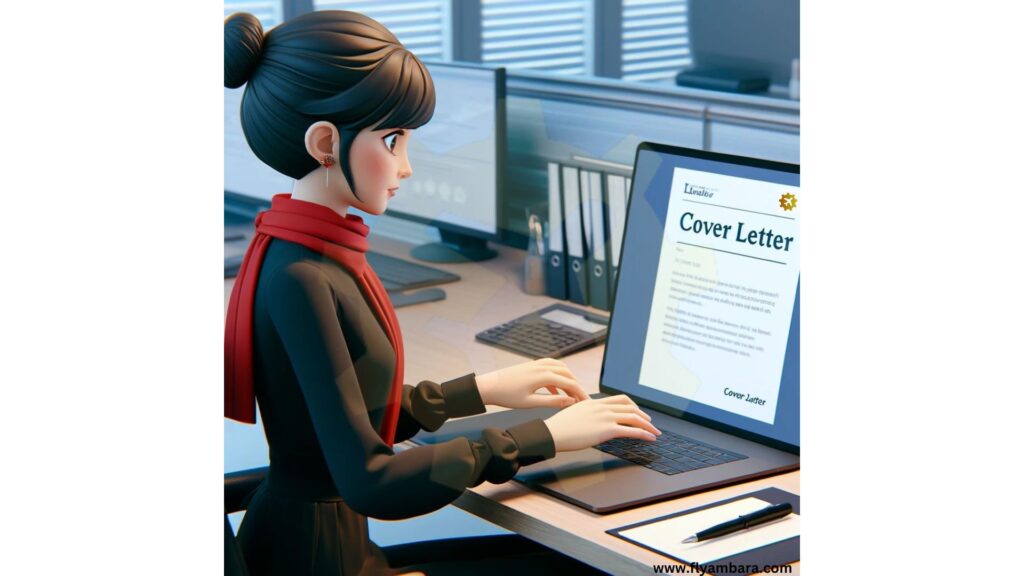Cabin Crew Cover Letter Guide -7 Essential Tips

Creating a standout cover letter is a critical step in securing a position as a cabin crew member, especially if you are pursuing cabin crew training in Bangalore. This Cabin Crew Cover Letter Guide offers detailed advice on drafting an effective cover letter that showcases your suitability for the role, aligning perfectly with the rigorous standards of the aviation industry.
1. Header and Introduction
Clearly include your name, contact details, and the date at the top. For emails, ensure your subject line is professional and indicative of the content.
Start with a respectful greeting targeted at the hiring manager. Introduce yourself and succinctly state your interest in the cabin crew position, highlighting your enthusiasm for the airline and the role. Refer to this Cabin Crew Cover Letter Guide for tips on crafting an engaging introduction.
2. Your Background in the Cabin Crew Cover Letter Guide
Experienced Candidates: Briefly describe your background in aviation, focusing on your experience with customer service and safety training, ideally linked to an aviation diploma online or in-person. This Cabin Crew Cover Letter Guide emphasizes the importance of detailing your relevant experience.
Emphasize educational achievements, particularly in aviation or customer service, that prepare you for a cabin crew role. Following this Cabin Crew Cover Letter Guide can help you highlight your educational background effectively.
3. Your Skills and the Company Fit in the Cabin Crew Cover Letter Guide
Articulate how your skills complement the airline’s requirements. Mention any specific training courses, like the best diploma in aviation in Bangalore, that equip you with the skills to excel in this high-responsibility field. This Cabin Crew Cover Letter Guide suggests showcasing how your skills align with the airline’s needs.
4. Specific Contributions in the Cabin Crew Cover Letter Guide
Discuss specific contributions you can make to the team, based on your past experiences and skills. Highlight situations where you’ve demonstrated leadership, crisis management, or any other attribute that is highly valuable in a cabin crew member. Refer to this Cabin Crew Cover Letter Guide for examples of valuable contributions.
5. Closing and Call to Action in the Cabin Crew Cover Letter Guide
Conclude by reaffirming your suitability for the cabin crew position. Politely thank the recipient for considering your application. This Cabin Crew Cover Letter Guide provides tips on crafting a strong closing.
Promptly suggest an interview, indicating your readiness to further discuss how you can contribute to the airline. Use this Cabin Crew Cover Letter Guide to create an effective call to action.
6. Avoiding Common Mistakes in the Cabin Crew Cover Letter Guide
Many candidates make the mistake of sending generic cover letters that do not engage the specific airline’s interests or requirements. Avoid overly general statements that could apply to any position in any company. Instead, use precise examples from your experience that directly relate to the key competencies required by the airline. Additionally, ensure that your cover letter is free from grammatical errors and typos, as these can detract significantly from your professionalism. Following this Cabin Crew Cover Letter Guide will help you avoid common mistakes.
7. Understanding Airline-Specific Values in the Cabin Crew Cover Letter Guide
Research the Airline’s Core Values and Culture
Before drafting your cover letter, take the time to understand the specific airline’s values and culture. This knowledge will allow you to tailor your letter to reflect how your personal values align with the airline’s mission. Discuss how your approach to customer service or safety aligns with the airline’s priorities, showcasing your deep understanding and commitment. This Cabin Crew Cover Letter Guide can help you align your values with the airline’s.
Customize Your Cover Letter for Each Airline
Customizing your cover letter for each application is not just about changing the name of the airline. It involves weaving in specific details that show you have researched and understood what each airline stands for. Mention any awards or recognitions the airline has received that inspire you, and relate those achievements to your own goals and methods. This Cabin Crew Cover Letter Guide highlights the importance of customization.
Following Up Properly in the Cabin Crew Cover Letter Guide
Discuss the importance of an appropriate follow-up. Candidates should wait a week or two before sending a polite follow-up email if they have not received a response. The follow-up message should be brief, expressing continued interest in the position and a willingness to provide further information if necessary. This Cabin Crew Cover Letter Guide suggests best practices for follow-ups.
Conclusion
With these comprehensive steps and careful considerations, your cabin crew cover letter will stand out as thoughtful, well-researched, and aligned with the airline’s highest standards. This attention to detail will not only showcase your qualifications but also your dedication to becoming a part of the airline’s team. This Cabin Crew Cover Letter Guide ensures your cover letter meets industry standards.
For more tips on creating a compelling application, check out our Cabin Crew Resume Essentials. Preparing for an interview? Our Cabin Crew Interview Checklist offers valuable insights. Ready to take the next step in your career? Explore our Aviation Courses. Check out our Cabin Crew Eligibility for more information on the requirements.
If you’re looking for further guidance on writing a cover letter, these external resources might be helpful:
Ready to Embark on Your Aviation Journey?
Discover the skies with Ambara Institute of Aviation.
Select the course that aligns with your career aspirations and become part of our aspiring community of aviation professionals. Experience our unique teaching methodology firsthand by joining us for a free demo class. Dive into the world of aviation, get a taste of our comprehensive curriculum, and see why our students choose Ambara for their aviation careers.
Take Your First Step: Sign up for a complimentary demo class today and see what makes our learning experience exceptional. For more details on our courses and how to register for the demo, contact us now.
Diploma in Aviation Management
- Duration – 3 Months / 6 Months
- Eligibility – 12th pass or Appearing
- Classes -Offline
- Placement Support – Life Time
- Fees EMI – Available
- Skill India Certification
Diploma in Aviation Management (Online)
- Duration – 3 Months / 6 Months
- Eligibility – 12th pass or Appearing
- Classes – Online Live
- Placement Support – Life Time
- Fees EMI – Available
- Skill India Certification
Certification in Aviation Management
- Duration – 1 week.
- Eligibility – Open to All
- Classes – Online Only
- Placement Support – Limited
- Fees – 999/-
- Ambara Certification
